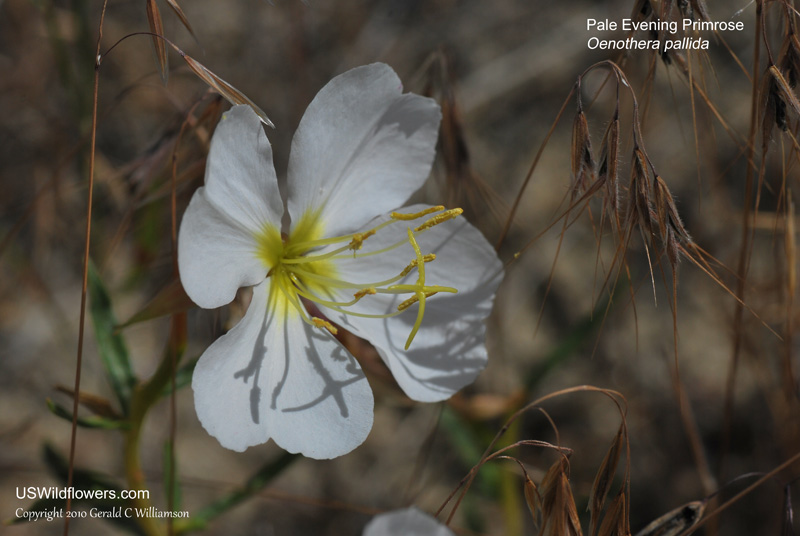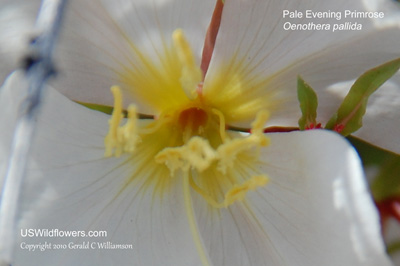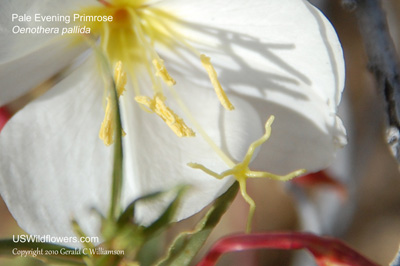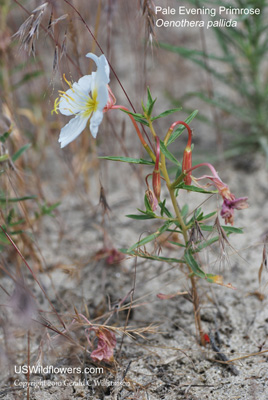Pale Evening Primrose, White Evening Primrose, Pale-Stemmed Evening Primrose - Oenothera pallida
|
Oenothera pallida - Pale Evening Primrose, White Evening Primrose, Pale-Stemmed Evening Primrose. While there are Oenothera species in every state except for Alaska (also in all of Canada except Yukon), Oenothera pallida is a western species, being found in 11 western states, and in British Columbia. Of the few pink or white Oenothera species found in Idaho, where these photos were taken, the others have leaf structures/shapes that are significantly different. It can bloom from mid-spring on well into the fall.
Found in:
AZ, CO, ID, MT, NM, NV, OR, TX, UT, WA, WY
Leave comments on Oenothera pallida at this link. | 
Distribution of Oenothera pallida in the United States and Canada:

Map courtesy of The Biota of North America Program.
Map color key
Search Our Database: Enter any portion of the Scientific, Common Name, or both.
Do a general Google search of the entire site:
#ad
 Follow USWildflowers on Twitter
| | Site: Elephant Rock, Boise Foothills, Ada County, ID Date: 2010-June-19 | Photographer: Gerald C. Williamson
Nikon D60
Tamron SP 90MM f/2.8 AF Macro | | The four petals of Pale Evening Primrose are white, turning pink after pollination. The blossom can be up to 2.5 inches across. | | 
| | Site: Lucky Peak Area, Boise Foothills, Ada County, ID Date: 2010-June-16 | Photographer: Cindy Williamson
Nikon D40 | | There are yellow patches at the base of the white petals. | | Click on the photo for a larger image

| | Site: Lucky Peak Area, Boise Foothills, Ada County, ID Date: 2010-June-16 | Photographer: Cindy Williamson
Nikon D40 | | The crossed stigma is what sent me to Oenothera for identification of the flower. Pale Evening Primrose has 8 stamens. | | Click on the photo for a larger image

| | Site: Elephant Rock, Boise Foothills, Ada County, ID Date: 2010-June-19 | Photographer: Gerald C Williamson
Nikon D60
Tamron SP 90MM f/2.8 AF Macro | | Although the usually red stems are also usually fleshy, they can also appear to be woody. The plant may be 6 to 24 inches tall when mature, and although they are herbs, can occasionally appear similar to shrubs. | | Click on the photo for a larger image

|
References used for identification and information:
|
|
| |
| #ad
|
|






